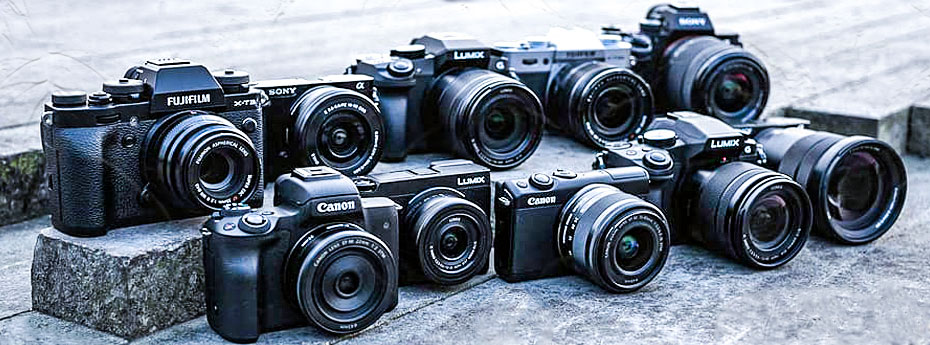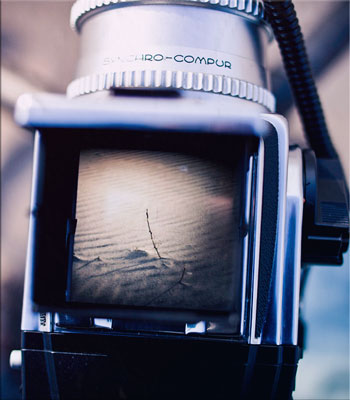
Mirrorless system cameras with interchangeable optics, which became widespread just a decade ago, are now the primary opponents to permanent leaders such as SLR cameras. The future belongs to mirrorless cameras. Let me explain to you why.
First, we will consider SLR cameras in detail. Why SLR? One of the main operating tools is the sliding mirror’s mechanism because of its Single-Lens Reflex camera. It’s used to provide visibility of the future frame field in the optical viewfinder window. Reflecting from the mirror, the light is double reflected through the pentaprism’s edge and only then falls directly into the viewfinder. When the shutter button is pressed, the mirror is removed from the light path to enter the camera matrix quickly. Simultaneously, the shooting moment remains invisible in the viewfinder because the raised mirror covers the matte focusing screen. The mirror mechanism is only an additional element in the process of photography. Due to its bulky size, SLRs are doomed to be large and heavy. But with the appearance of mirrorless cameras, everything has changed.
Mirrorless cameras are useful because their light output is pointed directly at the image sensor, avoiding all the chain’s intermediate parts. Accordingly, they have a more straightforward design, fewer brittle elements, and, last but not least, better weighting characteristics.
How many trumps does the mirrorless camera hold in its digital hand? To learn about it, keep reading.
Compact Dimensions
You’ll never find an SLR camera of the same size as a mirrorless camera. The smaller mirrorless cameras are almost identical in size to the average digital cameras. Besides, mirrorless cameras often use more compact optics, eliminating the need to carry a suitcase full of equipment with you.
A small camera in duo with a compact lens attracts less attention to its owner, which is relevant in street photography and takes up little space. However, many mirrorless initial and middle segments are not always comfortable holding in your hand because of its compact size. SLR cameras have better ergonomics because of space for a handle and additional quick access buttons on their more massive body.
Electronic Viewfinder
You can see the real frame through the viewfinder of mirrorless cameras, which will not change after the shooting process. A picture on the viewfinder screen is displayed from the sensor, considering the settings for shutter speed and aperture, light sensitivity, white balance, and exposure compensation. Also, it can indicate a mass of related shooting settings, such as a histogram.

It’s useful to know that due to accessibility, many initial level mirrorless cameras have no viewfinder in their design, and the rear screen plays the role of “universal soldier.” The display at the back of the camera body is used for sighting during shooting, changing settings, and viewing the images.
With the mode of displaying the future frame’s field on SLR cameras’ display, everything is much more complicated because of the focus specifics. When using the automatic sharpening pickup system in the Live View mode, the camera works with the raised mirror, using less contrast focusing. It means that an SLR camera in this mode is similar to an average mirrorless camera.
Previously, many mirrorless cameras had a problem transmitting an image in the viewfinder and on the screen, making them unsuitable for shooting highly dynamic scenes (reports from sports events, shooting objects in motion, etc.). However, nowadays, most of the current models have significantly increased the frequency of updating, and the delay in transferring the image to the camera display is extremely low. It’s no longer possible to see it with the naked eye.
Image Stabilization
A strong argument in favor of many mirrorless cameras is the image stabilization system. Such an approach is advantageous because it works in conjunction with any optics. In the most advanced mirrorless cameras, the image stabilization system can compensate for up to 7 exposure steps in handheld or low-light conditions.
No Back- and Front-Focus Errors
Focus sensors for mirrorless cameras are located right on the sensor surface. It solved the problem of back- and front focus. This phenomenon is unique and arises due to the mismatch between the autofocus sensors and the mirror. With the development of hybrid autofocus systems, the problem was removed.
Backfocus is an error in the automatic focus system, where the camera hits the sharpness behind the subject. Front focus is a similar error, but the focus occurs before the shooting object.
Video Shoot
With built-in autofocus sensors and sensor stabilization, mirrorless cameras are much better suited to video than SLR cameras.
Most mirrorless cameras have 4K video, while in the SLR world, recording in UltraHD is the prerogative of top segment devices.
Autonomy
The only point where mirrorless cameras lag is their battery. The batteries run out quickly due to an LCD screen or electronic viewfinder for the shooting process and viewing images. Mirrors allow you to take pictures without their involvement, just by looking through the optical viewfinder.
Most mirrorless cameras can take up to 300-400 pictures on a single battery charge, while the SLR cameras often take 2-3 times more pictures.a





